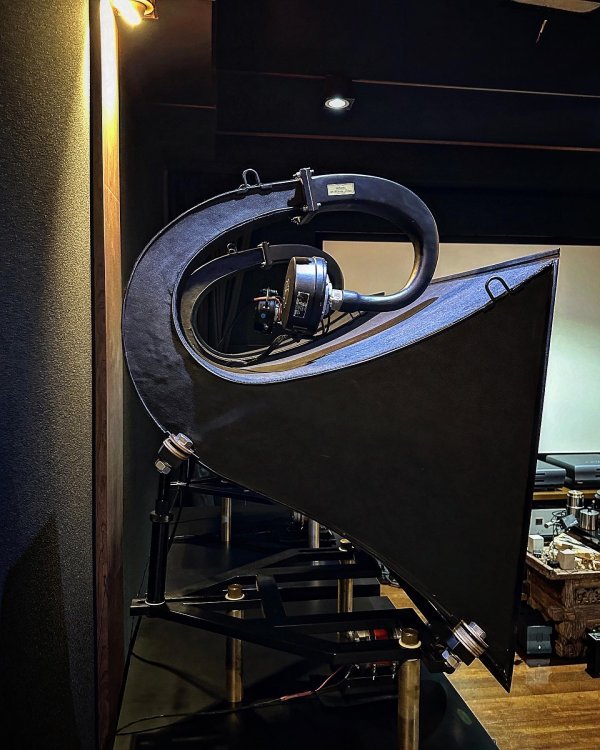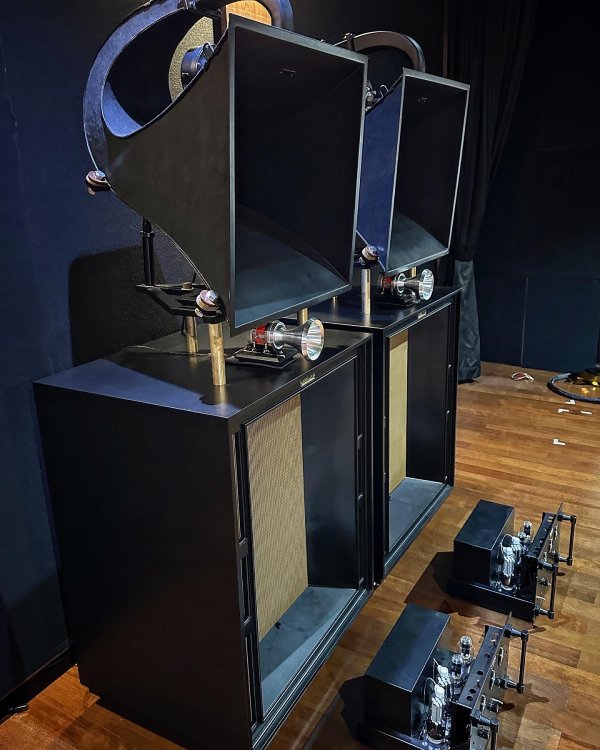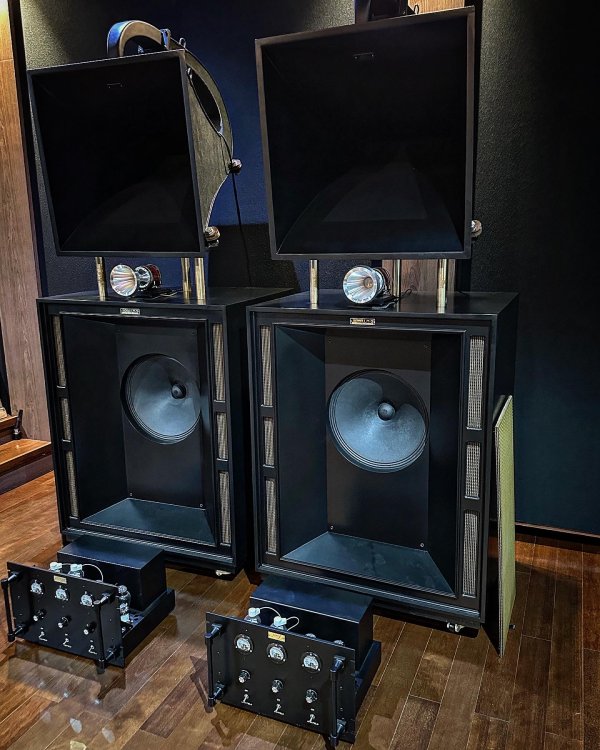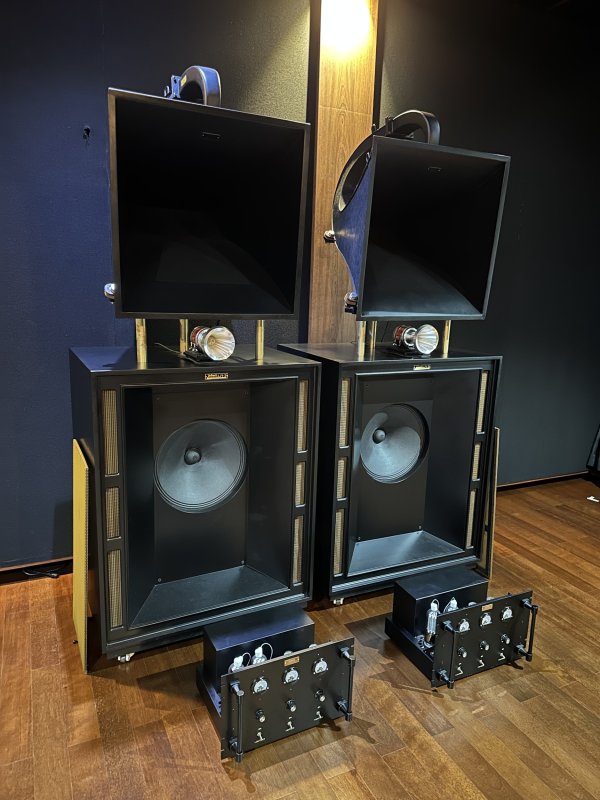I think this would have better timing than what I heard with the snail horn. Something about the time integration made the whole thing sound a bit lazy and lacking impact despite the high sensitivity.
It's inherent to the physical/acoustic phenomena at play.
Snail horns provide extreme horn loading, resulting in an almost perfect impedance match between the source (driver) and free air. However, this can be perceived as a kind of pressure loss, with less impact due to the long horn path. The sound 'floats' in the room rather than being projected towards the listeners.
Illustrated by 3 sims of a WE 15A.
At 500 Hz:

2 kHz:

And 5 kHz:
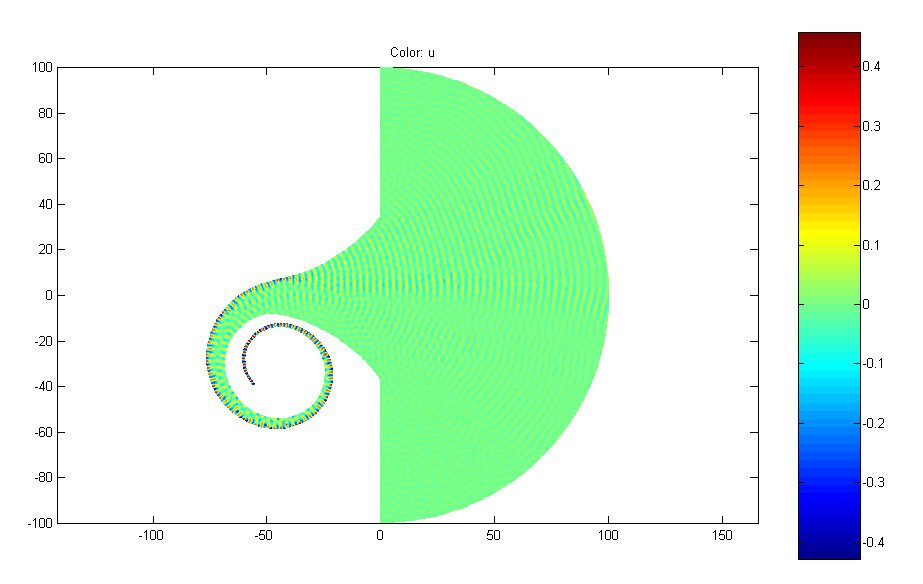
It's difficult to integrate such horns in a homogeneous way with a low freq. section, perhaps with the exception of a full length bass horn.
Last edited:



